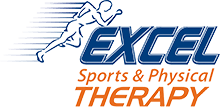Most people have heard of or even felt lower back pain, but there are other types of back pain you might develop, too. People who are feeling upper back pain located between their shoulder blades are well aware of that.
The upper back pain that you’re feeling between your shoulder blades has a specific name. It’s known as thoracic back pain. This form of back pain is reported to affect as many as 34.8% of people every year. Understanding the source of your thoracic back pain is the first step toward treating it. Physical therapists can help you gain this understanding, and they can also build you a highly effective treatment plan for your pain.
Why are you feeling thoracic back pain?
The thoracic area of your back extends from the base of your neck down to the level of your abdomen. That’s why the upper back pain you’re feeling between your shoulder blades is labeled thoracic back pain. There are several reasons why you may be feeling this type of pain. Some of the most common reasons include:
- A muscle issue — The area between your shoulder blades is the home of your rhomboid muscles. These muscles are primarily responsible for connecting your shoulder blades and spine. These muscles are also activated when you bend your head forward. They also help support the shoulder blades during throwing movements. Repeating such movements too often can increase stress on your rhomboid muscles. Over time, this added stress could lead to a strain. This can be the source of your thoracic back pain.
- Herniated discs — A disc that bulges or tears slightly is known as a herniated disc. Herniated discs typically occur in the neck or lower back, but spinal discs are also found in the thoracic back. An impact to this area during a fall could trigger a herniated thoracic disc. Car accidents or impacts while playing sports could as well. The symptoms of this disc injury can include pain, numbness and weakness.
- A pinched nerve — Each side of the thoracic spine is home to 12 nerve roots. These nerves allow the brain to send signals to the upper back, chest and abdomen. This high number of nerve roots also means there are plenty of nerves that could be pinched. A pinched thoracic nerve could trigger symptoms like:
- Aching, burning or sharp pain.
- Pain that radiates outward from the spine.
- Weakness in the affected area’s muscles.
- Numbness, tingling, or a pins-and-needles sensation.
Get effective help for your thoracic back pain at Excel PT
Struggling through your day with upper back pain located right between your shoulder blades? You can come into one of our Excel Sports & Physical Therapy clinics for help. Our physical therapists can do a free screening on you to determine why you’re in pain. They can then build you a customized treatment plan that may include techniques like:
- Therapeutic exercises.
- Soft tissue mobilization.
- Dry needling.
- The McKenzie Method®.
Contact our team today for more information about how we can address your back pain or to schedule your initial appointment.

